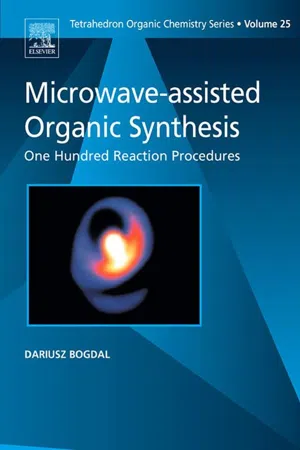
- 214 pages
- English
- ePUB (mobile friendly)
- Available on iOS & Android
About This Book
Microwave-assisted Organic Synthesis: One Hundred Reaction Procedures provides readers with a broad overview of microwave assisted Organic Synthesis, enabling students and researchers alike to produce more efficient and high yield syntheses while saving time and resources. The work addresses key problems faced by chemistry laboratories in academia and in industry, that of an ever increasing need for procedures which are low-waste, energy efficient, high yield, occur over a short reaction period, and use environmentally friendly solvents. All these factors play an important role in the development of Green Chemistry methods, and in this, Microwave-assisted Organic Synthesis: One Hundred Reaction Procedures is an excellent resource for any library.
- Provides a broad overview of microwave enhanced chemistry
- Extensive references to the source of each procedure, including equipment used, full operating procedure, and associated hazards
- Includes exercises and worked problems which can support more independent study
Frequently asked questions
Information
Interaction of microwaves with different materials

Table of contents
- Cover image
- Title page
- Table of Contents
- Copyright page
- Dedication
- Preface
- Acknowledgements
- Chapter 1: Interaction of microwaves with different materials
- Chapter 2: Microwave effect vs. thermal effect
- Chapter 3: Microwave equipment
- Chapter 4: Reaction vessels and glassware
- Chapter 5: Techniques for conducting chemical reactions under microwave irradiation
- Chapter 6: Safety precautions on the application of microwaves in laboratory
- Chapter 7: Reactions under microwave conditions
- Appendix
- References
- Index